What is Desktop Notifications Tech?
Desktop Notifications Tech is a SCAM that pretends to be a captcha verification asking visitors to confirm they are human. Scammers use fake captcha verification pop-ups to bait users into allowing push notifications from malicious ad servers.
Users can stumble onto Desktop Notifications Tech Top just by entering a misspelled web address. In addition, they can be redirected to this scam by malvertising (malicious advertisements), Adware and potentially unwanted programs (PUPs).
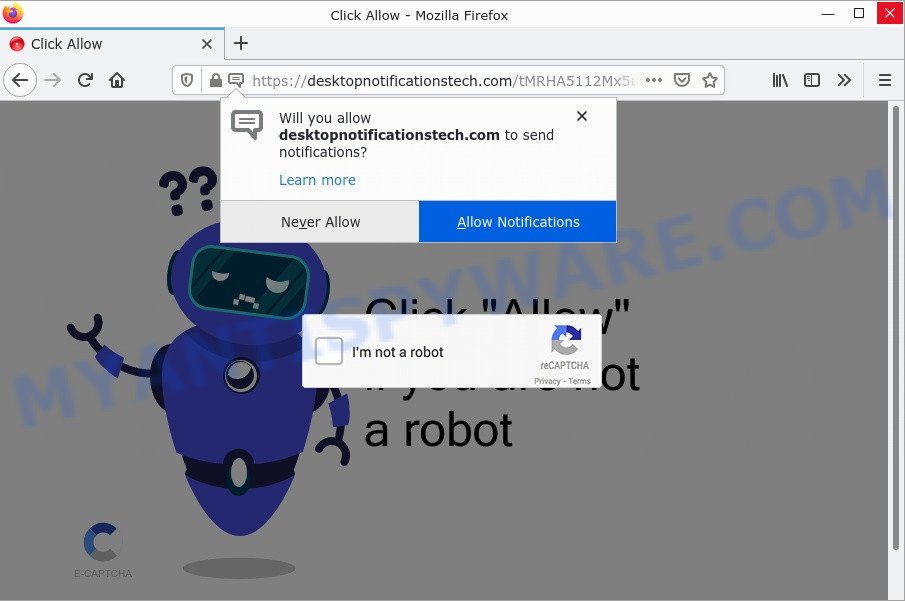
Desktop Notifications Tech pop-ups are a SCAM
Desktop Notifications Tech shows a fake captcha test, the “Click “Allow” if you are not a robot” message encouraging victims to click on the “Allow” button to prove that they are humans/not robots. The scam is intended to trick victims into allowing browser (push) notifications. Push notifications are originally created to alert users of recently published content. Cyber criminals abuse ‘push notifications feature’ to avoid anti-virus and ad blocking programs by displaying unwanted advertisements. These ads are displayed in the lower right corner of the screen urges victims to play online games, visit unsafe websites, install malicious browser extensions & so on.

Just as important, scam sites like Desktop Notifications Tech can change their content based on the user’s IP address. That is, users in different countries may see different content, depending on their GEO location. In some cases, scammers simply redirect users to other malicious or scam sites.
Threat Summary
| Name | Desktop Notifications Tech, “Desktop Notifications Tech virus” |
| Type | spam push notifications, browser notification spam, pop-up virus |
| Fake claims | Click “Allow” if you are not a robot |
| Distribution | potentially unwanted apps, dubious pop up advertisements, adware, social engineering attack |
| Symptoms |
|
| Removal | Desktop Notifications Tech removal guide |
There are many scam sites like Desktop Notifications Tech on the Internet; Solidprotectionspc.com, Soksicme.com, Freesamplesprousa.com are the last ones we reported on. The push notifications they show to users are dangerous as they promote scam pages and malware. In some cases, these notifications promote legitimate software such as McAfee, Norton, Avira antivirus products. Of course, the antivirus companies do not allow affiliates to promote their products using social engineering tricks, misleading methods, and deceptive advertising.
If your browser redirects to the Desktop Notifications Tech scam regularly, then it is possible that Adware is installed on your computer. Adware is a type of malicious software designed for the purpose of showing numerous popup windows and/or annoying advertisements on the infected computer without the user’s permission. The unwanted ads can lead to malware, harmful and scam sites.
Adware software usually gets installed alongside freeware, codecs and shareware. This means that you need to be careful when installing anything downloaded from the Web, especially from file sharing web-sites. Be sure to read the Terms of Use and the Software license, choose only the Manual, Advanced or Custom setup mode, switch off all third-party browser extensions and apps are offered to install.
Remove Desktop Notifications Tech notifications from internet browsers
If you’re getting notifications from Desktop Notifications Tech or another scam site, you’ll have previously pressed the ‘Allow’ button. Below we will teach you how to turn them off.
|
|
|
|
|
|
How to remove Desktop Notifications Tech pop-ups (Adware removal guide)
There exist several free adware removal utilities. Also it is possible to remove Desktop Notifications Tech pop-up ads manually. But we recommend to combine all these solutions below into the one removal algorithm. Follow the steps of the guide. Some of the steps below will require you to close this webpage. So, please read the step-by-step guidance carefully, after that bookmark it or open it on your smartphone for later reference.
To remove Desktop Notifications Tech pop ups, execute the steps below:
- Remove Desktop Notifications Tech notifications from internet browsers
- How to manually delete Desktop Notifications Tech
- Automatic Removal of Desktop Notifications Tech pop up advertisements
- Stop Desktop Notifications Tech popup ads
How to manually delete Desktop Notifications Tech
This part of the post is a step-by-step instructions that will help you to get rid of Desktop Notifications Tech ads manually. You just need to follow every step. In this case, you do not need to install any additional tools.
Uninstall PUPs through the Microsoft Windows Control Panel
You can manually delete most nonaggressive adware software by removing the program that it came with or removing the adware itself using ‘Add/Remove programs’ or ‘Uninstall a program’ option in Windows Control Panel.
Make sure you have closed all internet browsers and other applications. Next, delete any unwanted and suspicious apps from your Control panel.
Windows 10, 8.1, 8
Now, click the Windows button, type “Control panel” in search and press Enter. Select “Programs and Features”, then “Uninstall a program”.
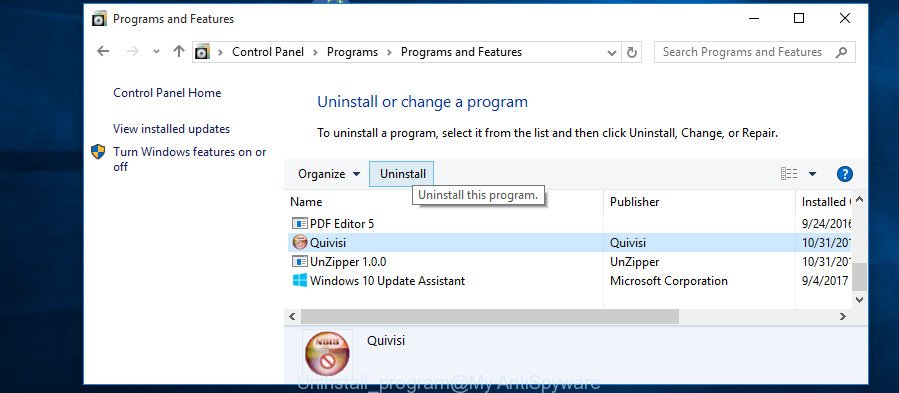
Look around the entire list of software installed on your computer. Most likely, one of them is the adware that causes multiple intrusive popups. Select the dubious program or the application that name is not familiar to you and delete it.
Windows Vista, 7
From the “Start” menu in MS Windows, select “Control Panel”. Under the “Programs” icon, select “Uninstall a program”.

Choose the dubious or any unknown programs, then click “Uninstall/Change” button to uninstall this unwanted program from your PC.
Windows XP
Click the “Start” button, select “Control Panel” option. Click on “Add/Remove Programs”.
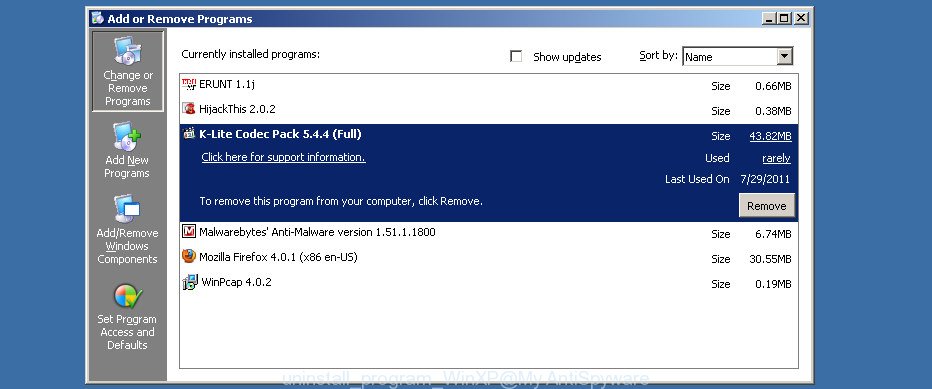
Choose an undesired program, then click “Change/Remove” button. Follow the prompts.
Remove Desktop Notifications Tech pop-ups from Chrome
Reset Chrome settings will get rid of Desktop Notifications Tech pop-ups from internet browser and disable harmful addons. It will also clear cached and temporary data (cookies, site data and content). It will save your personal information such as saved passwords, bookmarks, auto-fill data and open tabs.
Open the Chrome menu by clicking on the button in the form of three horizontal dotes (![]() ). It will display the drop-down menu. Select More Tools, then click Extensions.
). It will display the drop-down menu. Select More Tools, then click Extensions.
Carefully browse through the list of installed extensions. If the list has the addon labeled with “Installed by enterprise policy” or “Installed by your administrator”, then complete the following instructions: Remove Chrome extensions installed by enterprise policy otherwise, just go to the step below.
Open the Chrome main menu again, press to “Settings” option.

Scroll down to the bottom of the page and click on the “Advanced” link. Now scroll down until the Reset settings section is visible, as on the image below and click the “Reset settings to their original defaults” button.

Confirm your action, click the “Reset” button.
Delete Desktop Notifications Tech popup ads from Firefox
Resetting Firefox web browser will reset all the settings to their original settings and will remove Desktop Notifications Tech popup ads, disable malicious add-ons and extensions. It’ll save your personal information such as saved passwords, bookmarks, auto-fill data and open tabs.
First, launch the Firefox. Next, click the button in the form of three horizontal stripes (![]() ). It will display the drop-down menu. Next, click the Help button (
). It will display the drop-down menu. Next, click the Help button (![]() ).
).

In the Help menu press the “Troubleshooting Information”. In the upper-right corner of the “Troubleshooting Information” page click on “Refresh Firefox” button as displayed in the following example.

Confirm your action, click the “Refresh Firefox”.
Remove Desktop Notifications Tech pop up ads from IE
The Internet Explorer reset is great if your web-browser is hijacked or you have unwanted add-ons or toolbars on your browser, which installed by an malicious software.
First, run the Microsoft Internet Explorer, then click ‘gear’ icon ![]() . It will display the Tools drop-down menu on the right part of the internet browser, then click the “Internet Options” as displayed below.
. It will display the Tools drop-down menu on the right part of the internet browser, then click the “Internet Options” as displayed below.

In the “Internet Options” screen, select the “Advanced” tab, then click the “Reset” button. The IE will display the “Reset Internet Explorer settings” prompt. Further, click the “Delete personal settings” check box to select it. Next, click the “Reset” button as displayed in the figure below.

Once the process is complete, press “Close” button. Close the Internet Explorer and reboot your computer for the changes to take effect. This step will help you to restore your web-browser’s home page, new tab and search engine by default to default state.
Automatic Removal of Desktop Notifications Tech pop up advertisements
Spyware, adware, potentially unwanted applications and hijackers can be difficult to remove manually. Do not try to get rid of such malware without the aid of malicious software removal tools. In order to fully delete adware from your personal computer, run professionally developed utilities, such as Zemana Anti-Malware, MalwareBytes AntiMalware and HitmanPro.
Remove Desktop Notifications Tech pop ups with MalwareBytes AntiMalware
Remove Desktop Notifications Tech virus manually is difficult and often the adware is not fully removed. Therefore, we suggest you to run the MalwareBytes Anti-Malware that are completely clean your computer. Moreover, this free program will help you to get rid of malware, PUPs, toolbars and hijackers that your PC can be infected too.
Please go to the link below to download MalwareBytes Anti-Malware. Save it directly to your Windows Desktop.
327071 downloads
Author: Malwarebytes
Category: Security tools
Update: April 15, 2020
After downloading is complete, close all software and windows on your personal computer. Double-click the install file called MBSetup. If the “User Account Control” dialog box pops up as shown in the figure below, click the “Yes” button.
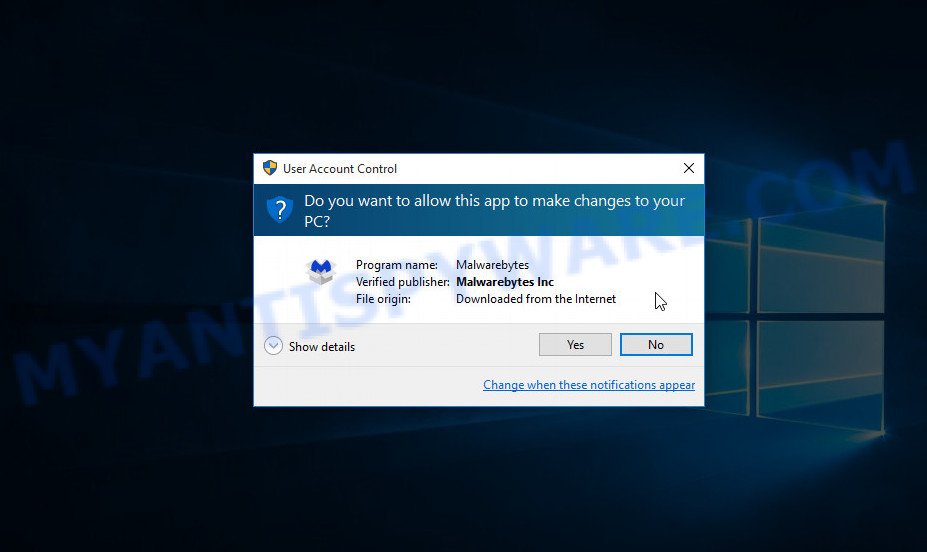
It will open the Setup wizard that will help you set up MalwareBytes Anti-Malware on your personal computer. Follow the prompts and do not make any changes to default settings.
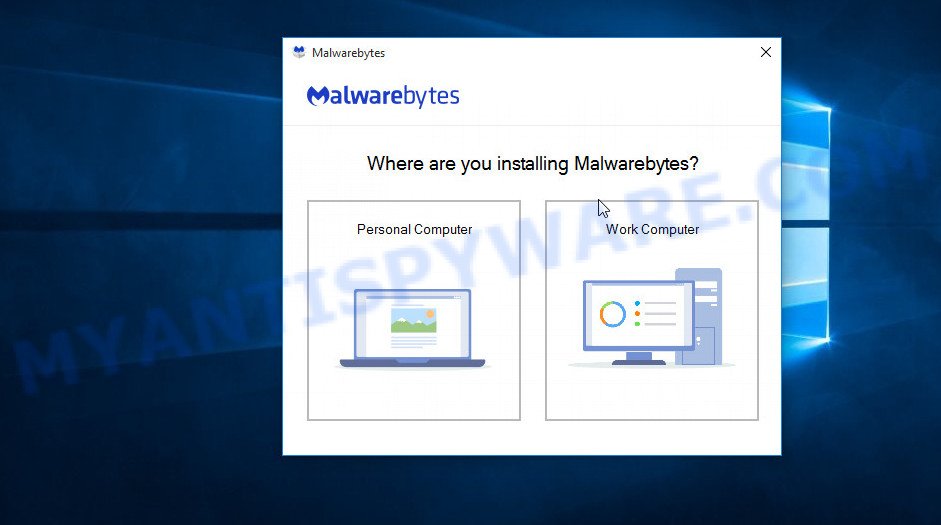
Once setup is finished successfully, click “Get Started” button. MalwareBytes Anti-Malware will automatically start and you can see its main screen as shown below.
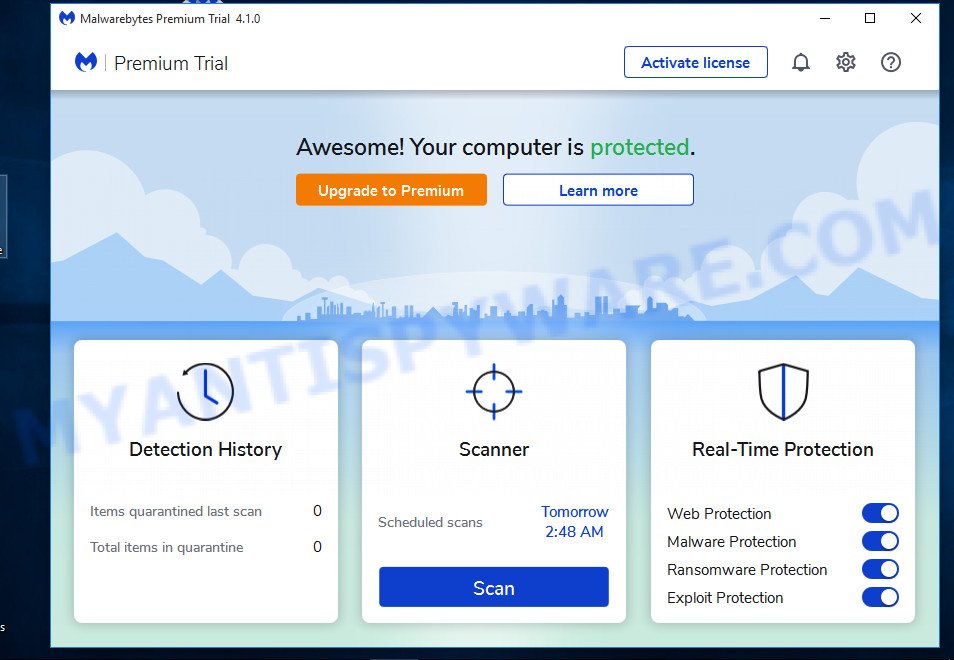
Now click the “Scan” button to start scanning your personal computer for the adware which causes the Desktop Notifications Tech advertisements. While the MalwareBytes Anti-Malware is scanning, you can see number of objects it has identified either as being malicious software.
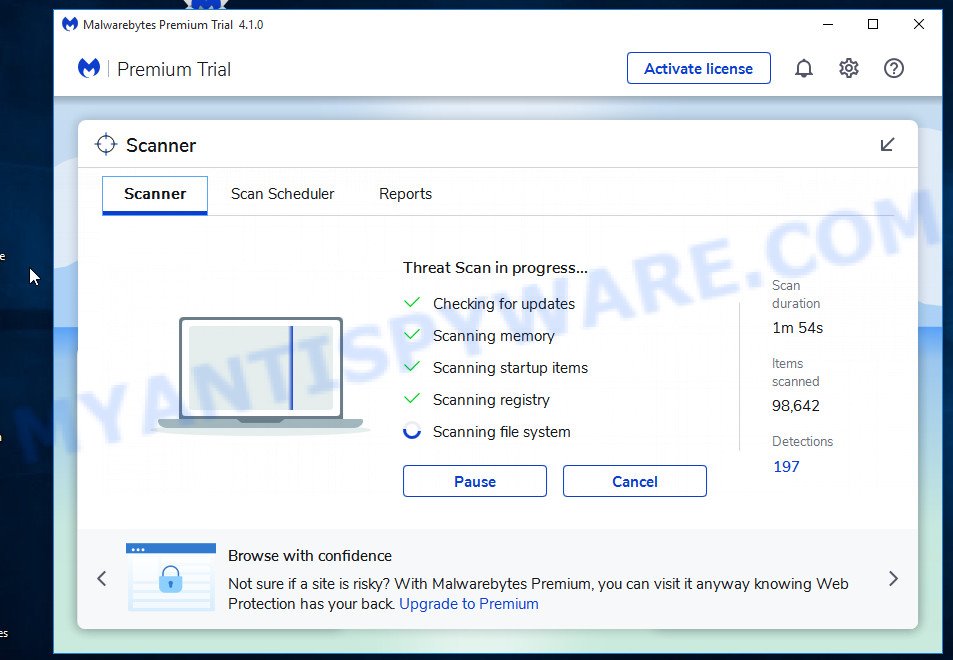
When finished, MalwareBytes will show a list of all items detected by the scan. Once you have selected what you want to delete from your computer click “Quarantine” button. MalwareBytes Anti-Malware will remove adware software that causes Desktop Notifications Tech popups and move the selected threats to the program’s quarantine. After finished, you may be prompted to restart the device.

We recommend you look at the following video, which completely explains the process of using the MalwareBytes to remove adware, browser hijacker and other malware.
How to get rid of Desktop Notifications Tech pop-ups with Zemana Anti-Malware
If you need a free tool that can easily delete Desktop Notifications Tech popup advertisements, then use Zemana Anti-Malware. This is a very handy application, which is primarily designed to quickly scan for and delete adware and malware affecting internet browsers and changing their settings.

- Visit the page linked below to download the latest version of Zemana AntiMalware for MS Windows. Save it on your Microsoft Windows desktop or in any other place.
Zemana AntiMalware
164814 downloads
Author: Zemana Ltd
Category: Security tools
Update: July 16, 2019
- At the download page, click on the Download button. Your web-browser will display the “Save as” prompt. Please save it onto your Windows desktop.
- When the downloading process is done, please close all apps and open windows on your computer. Next, run a file named Zemana.AntiMalware.Setup.
- This will run the “Setup wizard” of Zemana Anti-Malware onto your computer. Follow the prompts and don’t make any changes to default settings.
- When the Setup wizard has finished installing, the Zemana Anti-Malware will open and show the main window.
- Further, press the “Scan” button to locate adware software that causes Desktop Notifications Tech advertisements in your internet browser. Depending on your personal computer, the scan can take anywhere from a few minutes to close to an hour. While the Zemana Anti-Malware is scanning, you can see number of objects it has identified either as being malicious software.
- Once Zemana AntiMalware has completed scanning, Zemana Anti-Malware will open a screen which contains a list of malware that has been detected.
- You may remove threats (move to Quarantine) by simply click the “Next” button. The tool will get rid of adware software that causes Desktop Notifications Tech pop-ups and move the selected threats to the program’s quarantine. When finished, you may be prompted to restart the PC.
- Close the Zemana Anti-Malware and continue with the next step.
Use Hitman Pro to remove Desktop Notifications Tech ads
In order to make sure that no more harmful folders and files linked to adware software are inside your computer, you must use another effective malware scanner. We advise to use HitmanPro. No installation is necessary with this utility.
Visit the page linked below to download HitmanPro. Save it on your Windows desktop or in any other place.
After the downloading process is done, open the file location and double-click the HitmanPro icon. It will launch the HitmanPro utility. If the User Account Control dialog box will ask you want to launch the program, click Yes button to continue.
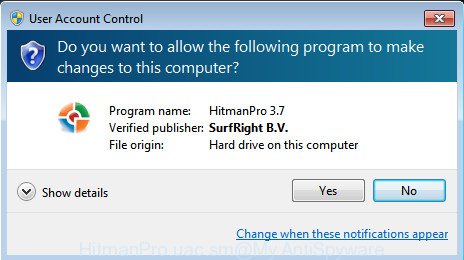
Next, click “Next” . HitmanPro application will scan through the whole computer for the adware which causes popups. A system scan can take anywhere from 5 to 30 minutes, depending on your computer. While the HitmanPro tool is scanning, you can see how many objects it has identified as being infected by malicious software.
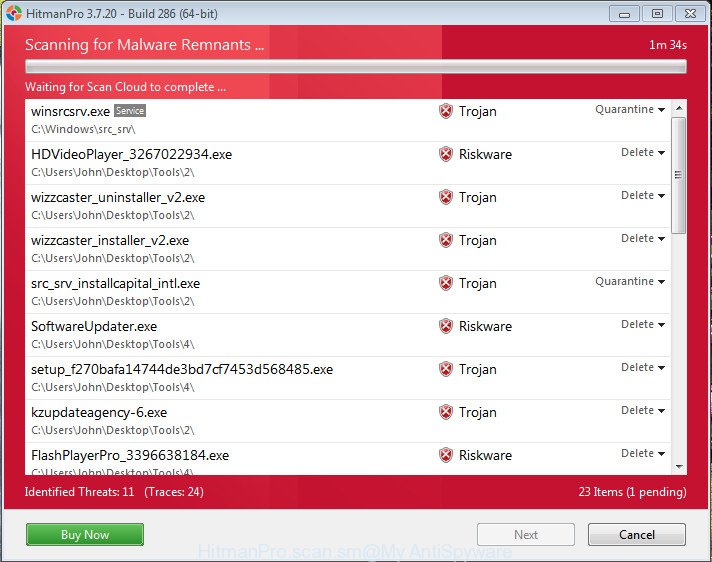
After the scanning is finished, HitmanPro will produce a list of unwanted programs and adware such as the one below.
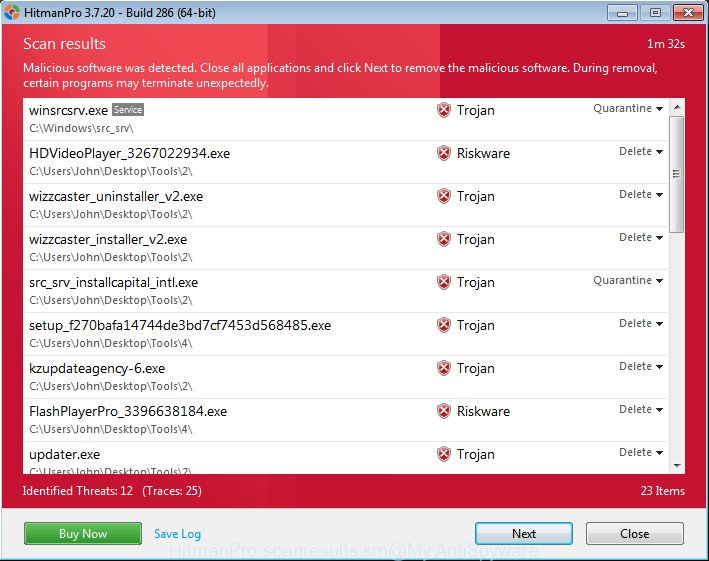
Review the scan results and then click “Next” button. It will show a dialog box, press the “Activate free license” button. The Hitman Pro will get rid of adware software that causes pop-ups and move the selected items to the Quarantine. When that process is complete, the tool may ask you to restart your PC.
Stop Desktop Notifications Tech popup ads
It is important to use ad blocking programs such as AdGuard to protect your device from malicious web sites. Most security experts says that it is okay to stop advertisements. You should do so just to stay safe! And, of course, the AdGuard can to stop Desktop Notifications Tech and other scam pages.
Download AdGuard by clicking on the following link. Save it on your Desktop.
26843 downloads
Version: 6.4
Author: © Adguard
Category: Security tools
Update: November 15, 2018
After downloading it, start the downloaded file. You will see the “Setup Wizard” screen as displayed in the following example.

Follow the prompts. When the setup is done, you will see a window as displayed in the following example.

You can click “Skip” to close the installation program and use the default settings, or click “Get Started” button to see an quick tutorial which will assist you get to know AdGuard better.
In most cases, the default settings are enough and you do not need to change anything. Each time, when you launch your personal computer, AdGuard will start automatically and stop unwanted advertisements, block Desktop Notifications Tech scam, as well as other malicious or misleading web sites. For an overview of all the features of the program, or to change its settings you can simply double-click on the AdGuard icon, that can be found on your desktop.
Finish words
Once you have removed the adware using the instructions, IE, Edge, Firefox and Chrome will no longer redirect you to various scam sites similar to Desktop Notifications Tech. Unfortunately, if the step-by-step guidance does not help you, then you have caught a new adware, and then the best way – ask for help here.


















